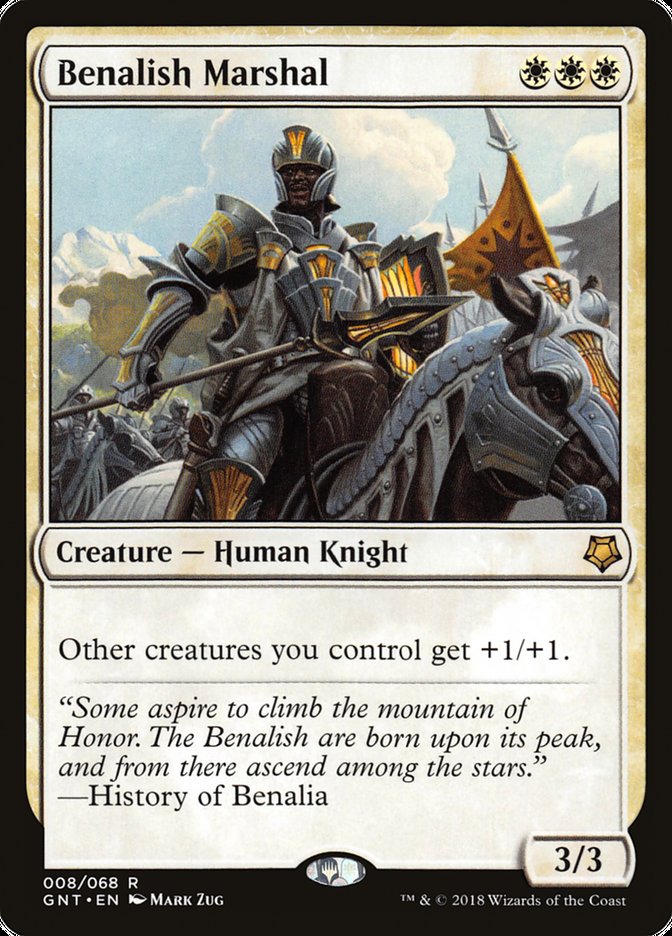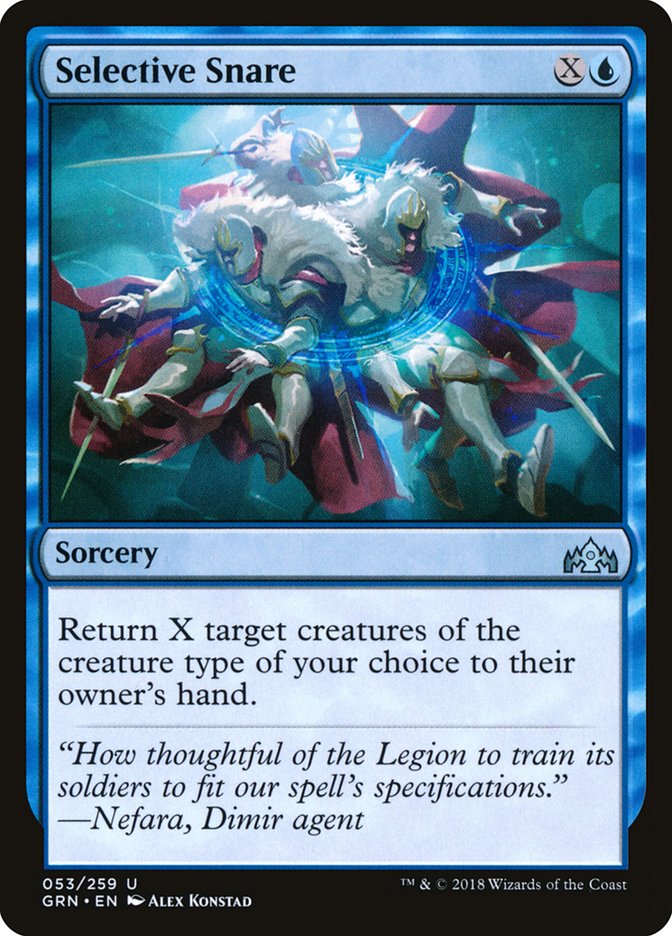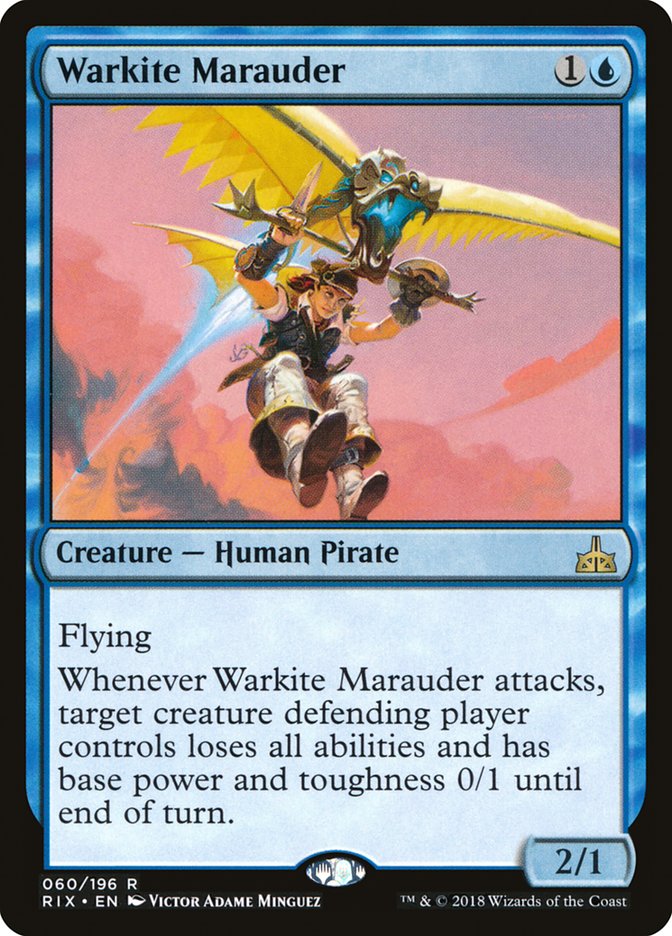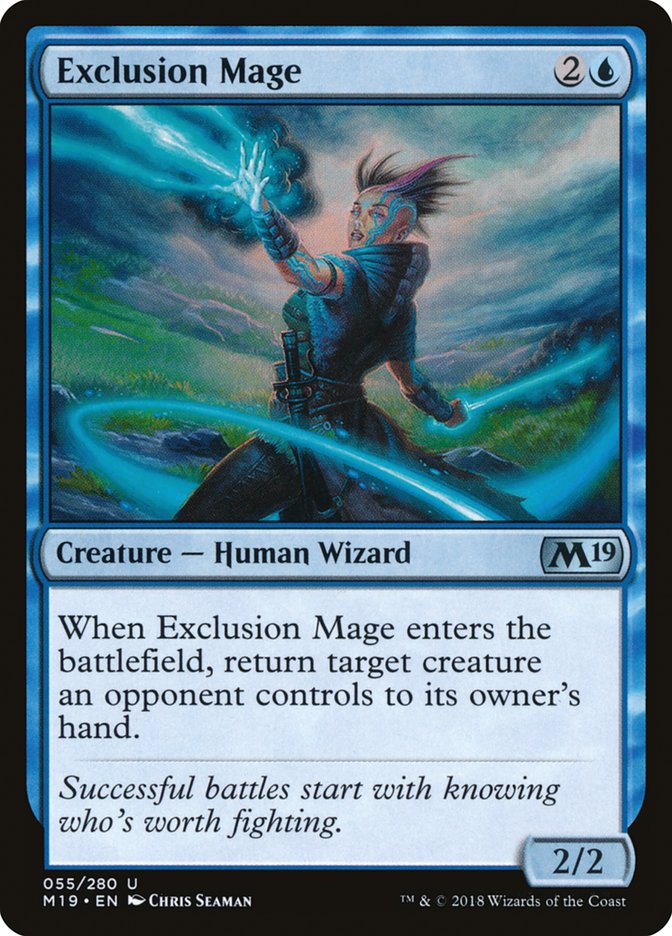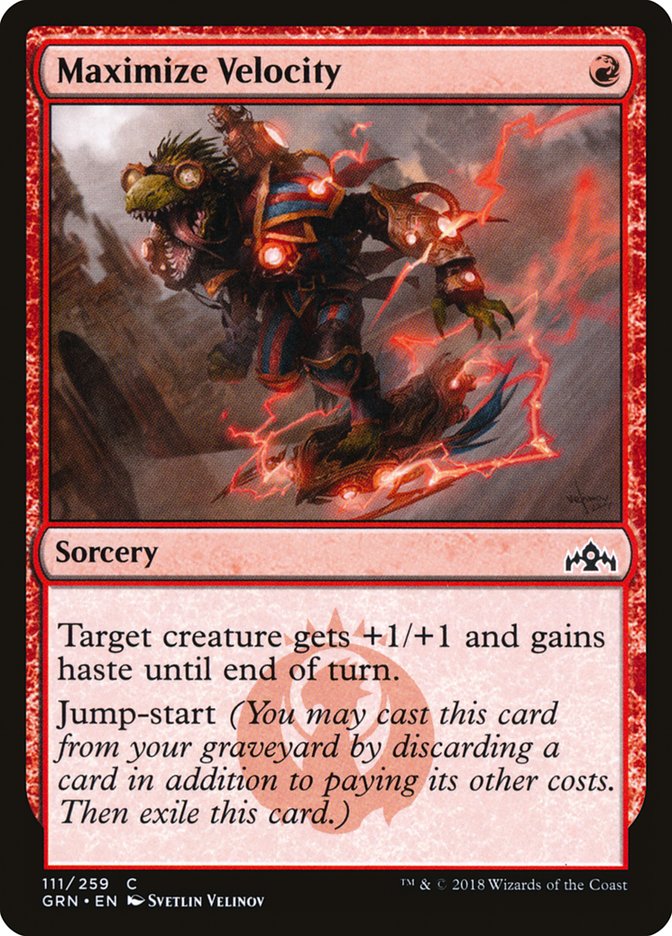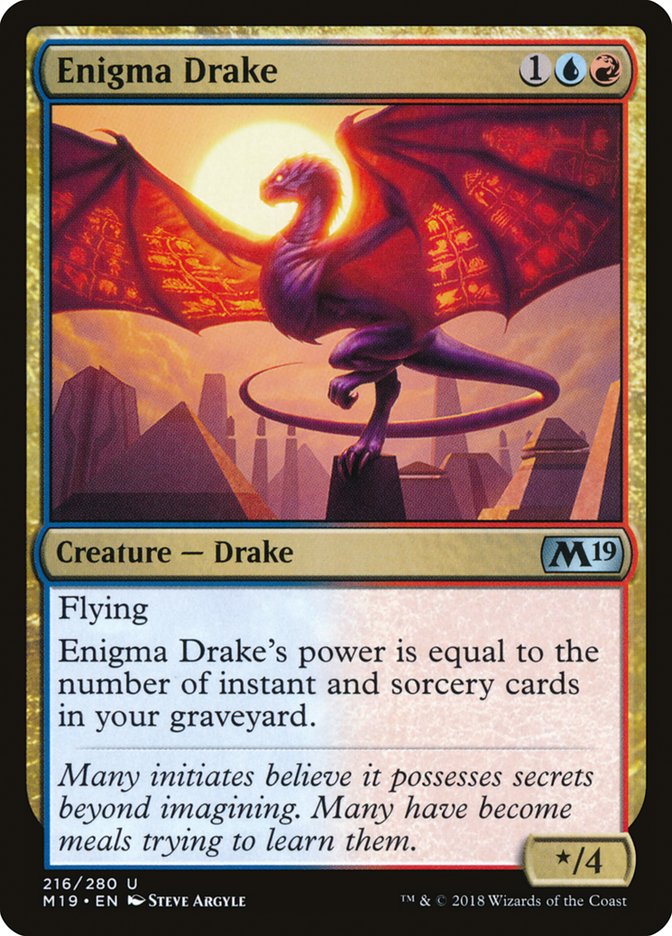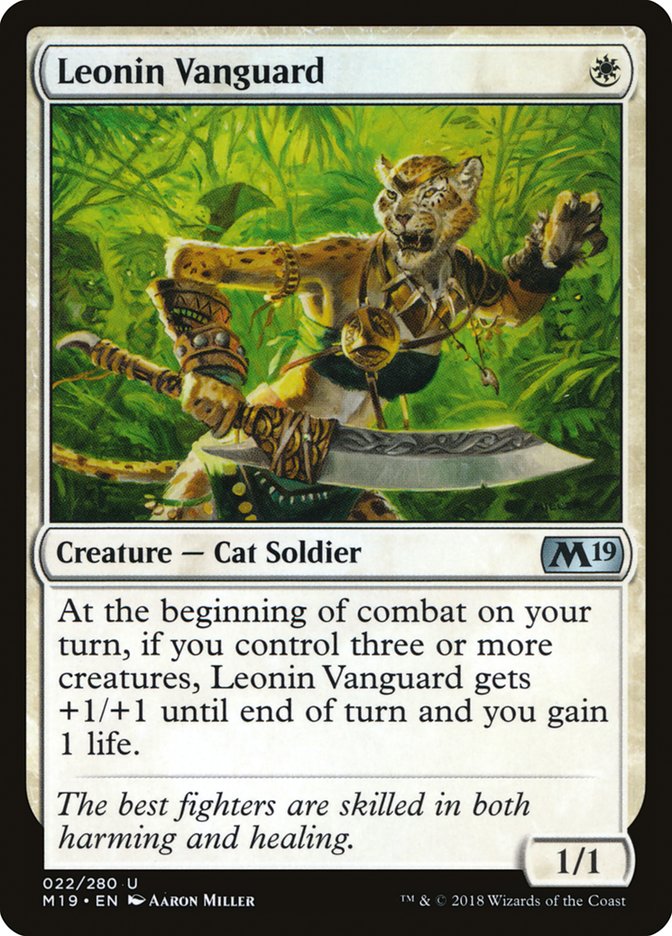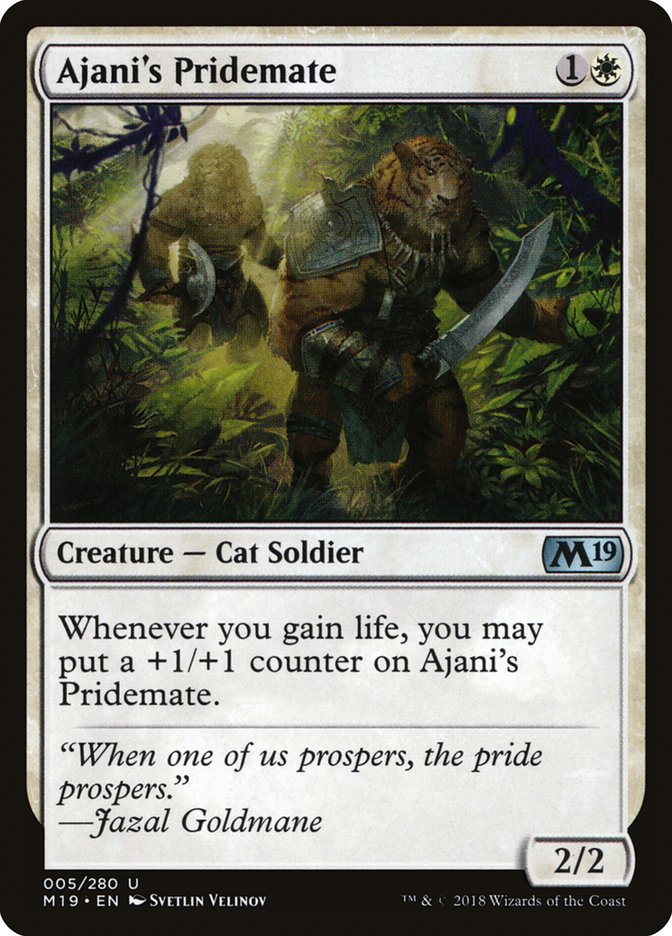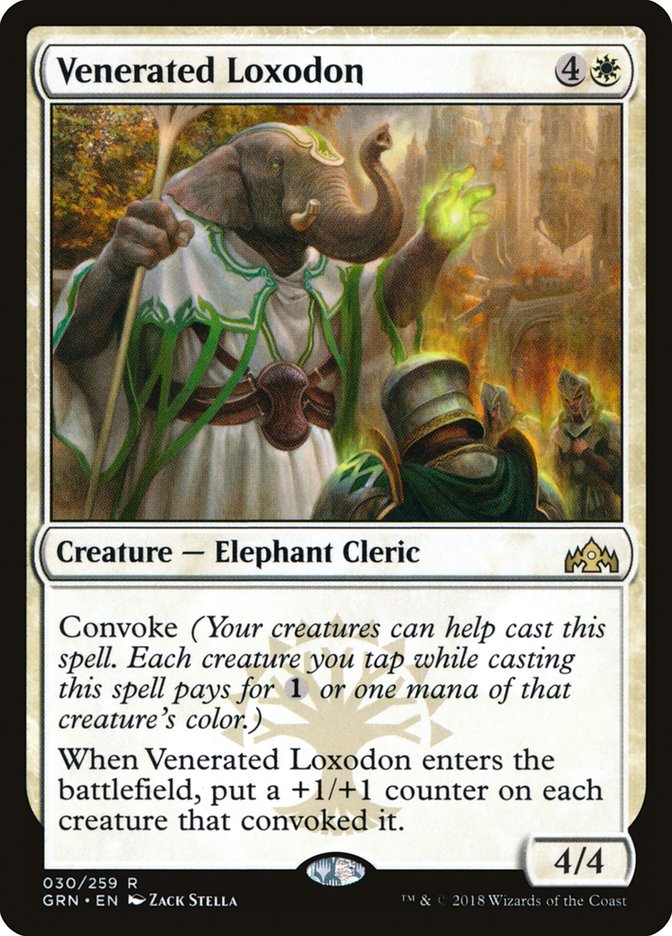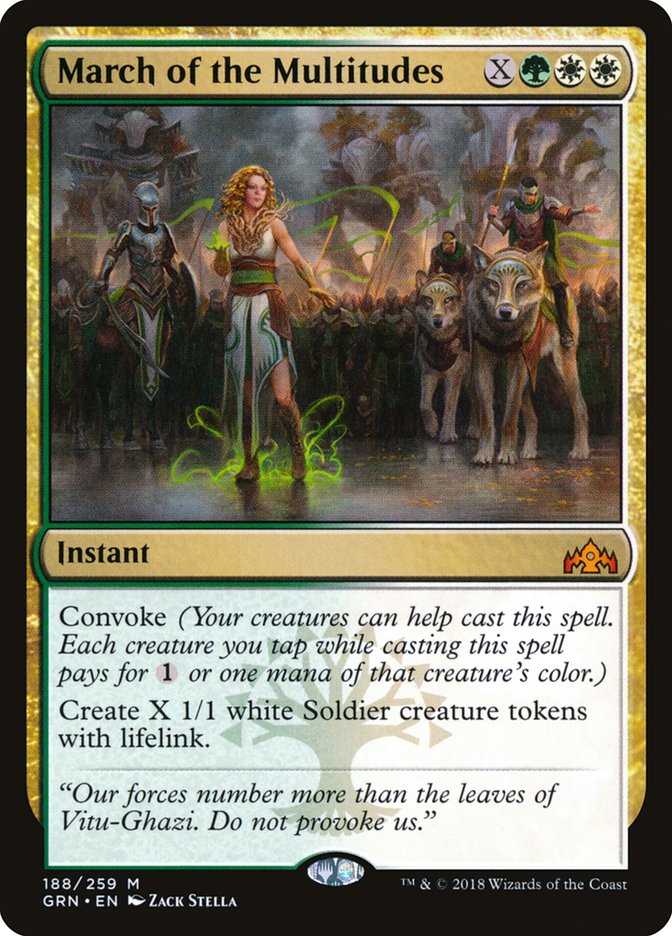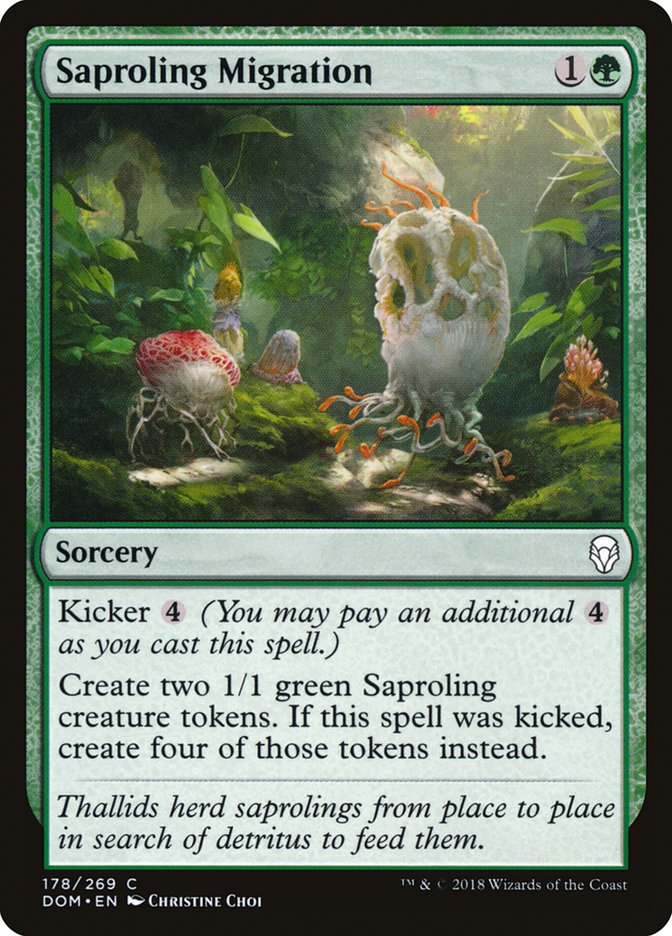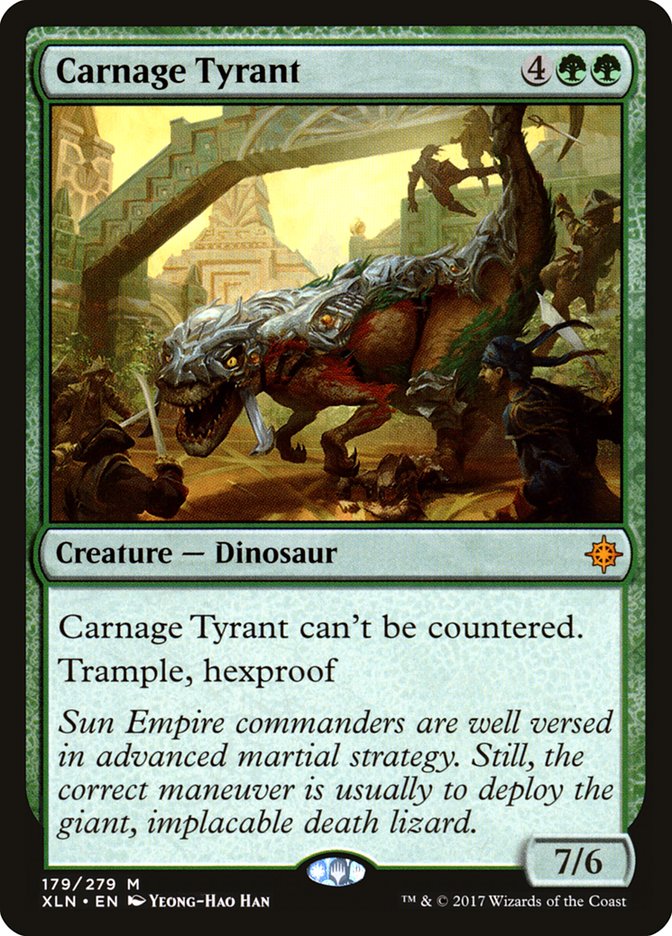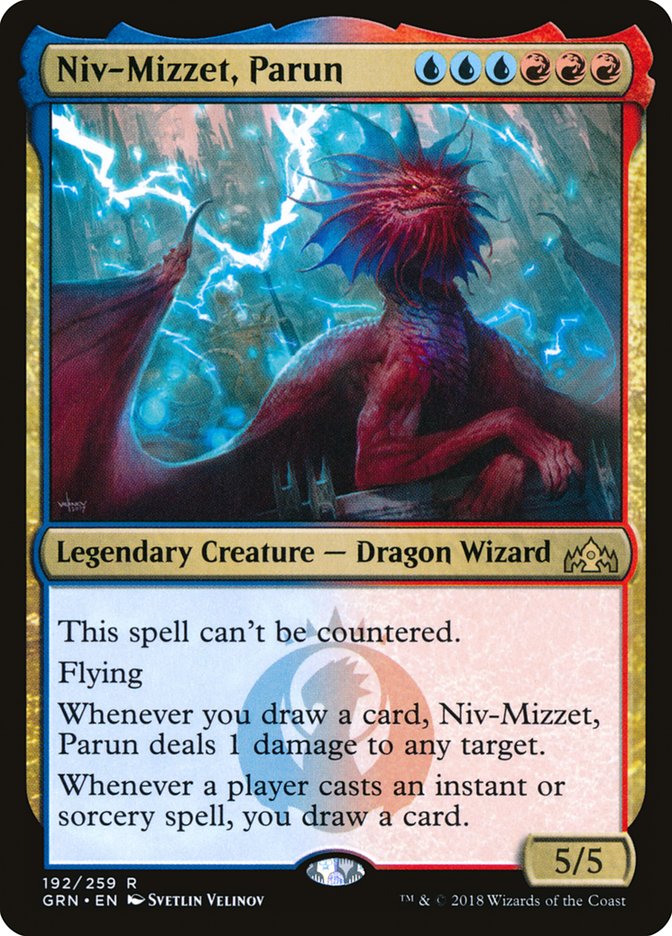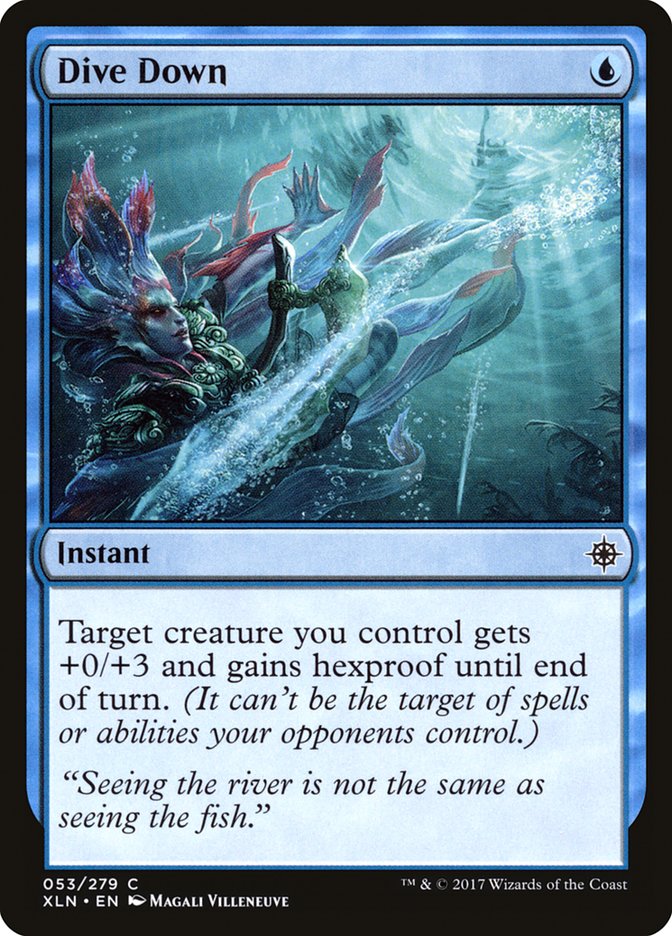Pro Tour Guilds of Ravnica absolutely must have one of the most
misleading Top 8s I’ve seen in my entire life. Looking at the players who
reached the elimination rounds of the tournament, it wouldn’t be absurd for
one to draw the conclusion that the tournament was absolutely dominated by
Benalish Marshal and his fellows.
That isn’t even slightly the case.
Looking at the decks that were able to get at least
six wins
;
seven wins
; and
eight or more wins
, there’s a ton of diversity in the field. You’d be doing yourself a
disservice to simply work on figuring out which flavor of aggressive white
deck is going to be the best this weekend and run it back. Rather than
looking at what made the top 8, looking further into what’s going on and
what’s important is going to help you determine what it is that’s best to
be sleeving up on SCG Vegas weekend.
Off the bat this begs the question “if Boros Aggro wasn’t the deck to beat
on the weekend, why did so many copies make it to the Sunday stage?” The
short answer to this is that the players that made deep runs had their
tournaments defined by their Limited records, with Michael Bernat in
particular only having a 7-3 record in Constructed.
That doesn’t tell us the entire story, as looking at the previously-linked
records of Constructed decks is going to give us an idea of what was
succeeding in the field. It’s up to us to do a bit of reverse-engineering
to find out why exactly certain decks were able to succeed in the field.
The Undefeated Players
The two players that did the absolute best were the ones to bring something
that they knew would fundamentally line up against the things they expected
players to bring, tuned it for the metagame, and were rewarded when their
estimations turned out to be on the mark.
Creatures (20)
- 4 Siren Stormtamer
- 3 Warkite Marauder
- 4 Mist-Cloaked Herald
- 4 Merfolk Trickster
- 4 Tempest Djinn
- 1 Exclusion Mage
Lands (20)
- 20 Island
Spells (20)

Gauther’s maindeck is fairly stock, but devoid of cute things and frills,
which is exactly where the lean, tempo-based decks want to be. The one cute
thing in the deck sticks out like a sore thumb but was genius for the
expected field:
When everything from Wildgrowth Walker to History of Benalia is trying to
clog the ground up, getting a turn or two of free attacks is unmatched in
this style of deck. On top of that, it’s fantastic against “countering” the
final chapter of History of Benalia. Drawing more than a single copy is
naturally going to be awkward, so the single copy may seem a bit out of
place, but it’s smart to construct the deck in such a way that there’s a 0%
chance of getting overloaded on cards that would otherwise be dead in
matchups where they’re less relevant.
The sideboard is where there’s a lot to really unpack, and there’s a bunch
of ground to cover this article, so let’s touch on the freshest tech out of
the sideboard:
Anyone else notice that the deck that was all over the top tables is a
white aggro deck that leans on a couple of different token producers? No?
Just Gauthier? Okay.
One of the big draws to Mono-Blue Aggro in general is that many of its
proactive cards are also “hate” cards, or just line up well against what
people are doing in Standard. The fact that so many of the cards in the
sideboard also exist in the maindeck speaks volumes about how strong a
subsection of the decks cards can be during pre-sideboard games.
Creatures (11)
Lands (21)
Spells (28)

That is a ton of high-costed sideboard cards.
On top of what is present in the sideboard, we can also gain a ton of
information from a couple of things that are missing from the maindeck:
Rather than having the aggressive combo-esque package that Yuuya Watanabe
had in
his take on the deck
, the two most successful versions of Izzet Drakes were more
control-centric and weren’t trying to invest cards into trying to punk
people out of games.
Ben Friedman had an
article earlier this week
that detailed the Boros Aggro versus Izzet Drakes matchup, specifically
from the Izzet side, so I’ll save some breath there, but speaking from
experience, it’s much more important to try and keep the Boros deck under
control before ultimately one- or two-shotting the opponent with a colossal
*/4.
Getting back to the cards in the sideboard, the fact that there are so many
haymakers that cost a million mana, it’s not difficult to paint a mental
picture in which Vieren plans to morph into a control decks like the Izzet
Spells deck that Grantfly reached the playoffs of the first Guilds of Ravnica Standard PTQ online:
Creatures (8)
Lands (23)
Spells (29)

The beauty of cards like Crackling Drake is that they get better as the
game progresses.
What this means is that rather than needing to pack a deck full of things
that are dedicated to ending the game, the Drakes pilot can simply play a
game of Magic, and eventually, Crackling Drake will be busted in half.
“Don’t die, and then you’ll win!”
It really is that simple.
The Boros Brigade
There’s more than one way to skin a cat, as it were, and a quick glance at
the decklist pages and names isn’t going to tell the entire story of what
people are doing with their Boros Aggro decks.
I don’t want to spend too much time on this particular section, as there
are surely copious numbers of articles out there dissecting the top 8 of
the tournament, but it wouldn’t be fair to talk about the specifics of what
different archetypes were doing in order to combat the Pro Tour metagame
without touching on the differences between the decks that made it to the
semifinals.
Creatures (20)
- 4 Adanto Vanguard
- 4 Skymarcher Aspirant
- 4 Goblin Instigator
- 2 Boros Challenger
- 2 Aurelia, Exemplar of Justice
- 4 Hunted Witness
Lands (23)
Spells (17)

This deck is “really” an evolution of the Boros Mentor decks that were
popular during the first week or so of this Standard format. Think of it as
a low-to-the-ground iteration of the Boros Angels deck. Or a
slightly-bigger version of the Boros decks that ended up winning the
tournament.
The big difference is that this is firmly a Boros deck, rather than a
“Well, a base-white deck with some red cards is technically Boros,
I guess.”
This gives access to some slightly more powerful spells in the deck and
gives the deck a heightened level of resiliency to spot removal; other than
Skymarch Aspirant, nothing in the deck dies to Justice Strike, for example.
This resiliency means that this take on the deck is going to be a
reasonable direction for the deck to lean into if the primary response that
people have to the Sacred Foundry decks is to start packing more removal.
Keep it in your back pocket.
Creatures (27)
- 4 Ajani's Pridemate
- 4 Adanto Vanguard
- 3 Skymarcher Aspirant
- 4 Benalish Marshal
- 4 Dauntless Bodyguard
- 4 Leonin Vanguard
- 4 Healer's Hawk
Lands (20)
Spells (13)

The draw to LSV’s take on the Boros Aggro deck is something straight out of
an Arena intro deck:
If the goal going forward is to play Boros Aggro to beat up on other Boros
Aggro decks, including this little package is a great way to do it. That’s
to say that Ajani’s Pridemate is actually fantastic and Leonin Vanguard (in
conjunction with Healer’s Hawk and Legion’s Landing) gives the deck a
reasonable density of enablers.
In a fight between aggressive white decks, having access to the biggest
thing is king.
Creatures (26)
- 4 Adanto Vanguard
- 4 Skymarcher Aspirant
- 4 Snubhorn Sentry
- 4 Benalish Marshal
- 4 Dauntless Bodyguard
- 2 Healer's Hawk
- 4 Venerated Loxodon
Lands (20)
Spells (14)

The draw to Elenbogen’s list is primarily in the fact that on top of having
the fewest cards that “require” synergies, it has the most anthems in it.
In the same vein as the point about Ajani’s Pridemate, having access to
several cards that can provide upwards of ten power and toughness for a
single card is going to be the difference between being at parity with the
opponent, and being so far ahead that there isn’t any hope of them catching
up with you.
A big draw to Elenbogen’s list is also that it has exactly zero red cards
in the maindeck. While this may seem incredibly subtle, never having dead
cards stranded in one’s hand, and reducing the odds of having awkward mana
as a result of mono-Clifftrop Retreat draws is going to add up over the
course of a longer tournament.
Players That Exploited the “Best” Deck
Although the Boros Aggro deck didn’t have an absolutely dominating
performance at the Pro Tour, it had a fantastic finish at the MOCS the
previous weekend, as the only undefeated deck no less, and had an enormous
target on its back as a result. It wasn’t a secret that the deck was good,
and with it being the “best” deck at the most recent tournament of
respectable magnitude, made a fair chunk of people bring things to the
tournament specifically to prey on the archetype.
Creatures (22)
- 2 Rekindling Phoenix
- 4 Fanatical Firebrand
- 4 Ghitu Lavarunner
- 4 Goblin Chainwhirler
- 4 Viashino Pyromancer
- 4 Runaway Steam-Kin
Lands (22)
- 22 Mountain
Spells (16)
Sideboard

Speaking of no-frills, despite a popular anti-red consensus being typical
around the internet, when people are bringing Skymarch Aspirant and
friends, Goblin Chainwhirler is a great place to be.
It’s strange to live in a world in which Mono-Red Aggro is the metagame
call, but here we are. If the red deck doesn’t interact, the Boros Aggro
deck has synergies between Benalish Marshal and Legion’s Landing that can
be hard for the red deck to break through, but with eight Lightning Strikes
and a slew of anti-little kid aggro cards coming from the sideboard, red
was in a great spot for a tournament with almost 20% of the field sporting
a deck full of x/1s.
Creatures (14)
Planeswalkers (2)
Lands (21)
Spells (23)
- 3 Legion's Landing
- 4 History of Benalia
- 4 Saproling Migration
- 4 Conclave Tribunal
- 4 March of the Multitudes
- 4 Flower
Sideboard

All the control decks in the Pro Tour made up roughly 15% of the field.
When everybody is doing stupid fair creature things, what’s the most
powerful thing to be doing?
Yeah, I guess clogging up the battlefield before vomiting ten bodies out of
a single card is a pretty strong thing to be doing.
Skymarch Aspirant and Dauntless Bodyguard, allow me to introduce you to my
friend:
There are some games that Golgari can pull ahead of Selesnya Tokens, but
most of them involve multiple copies of Find or Izoni, Thousand-eyed. It’s
hard to grind out a player when all their cards produce multiple bodies.
1/1 threats may not end up doing very much on their own but having several
copies of them with an anthem makes combat nearly impossible.
The Best of the Boring
There’s no need to reinvent the wheel every time. There’s a reason that
some decks stood out so quickly when Guilds of Ravnica was first
introduced into the format. There isn’t much flashy going on with these
decks, but understanding the variants that inevitably rose to the top is
going to do a world of good for determining how to build your deck for
#SCGVEGAS
.
Creatures (24)
- 4 Llanowar Elves
- 4 Druid of the Cowl
- 4 Carnage Tyrant
- 4 Merfolk Branchwalker
- 4 Jadelight Ranger
- 3 Ravenous Chupacabra
- 1 Golgari Findbroker
Planeswalkers (5)
Lands (23)
Spells (8)

There are some fancy things going on here in this decklist, but most of
what is going on is a dedicated plan to the implacable Death Lizard itself:
Whenever Jeskai and Golgari are the biggest decks in on the block, having a
big, untargetable idiot is a great place to put yourself.
Articles earlier this week from both Jadine Klomparens (found
here
) and Autumn Burchett (found
here
) touch on the power of Carnage Tyrant in the Golgari mirrors, but what we
were able to observe from the Pro Tour is that most lists were doing
something very similar to what Christian Hauck was doing at a Grand Prix
two weeks ago:
Creatures (25)
- 4 Llanowar Elves
- 4 Druid of the Cowl
- 4 Carnage Tyrant
- 4 Merfolk Branchwalker
- 4 Jadelight Ranger
- 3 Ravenous Chupacabra
- 2 Midnight Reaper
Planeswalkers (5)
Lands (23)
Spells (7)
Sideboard

The big thing to note in this list is the large number of mana accelerants
that are being used to crank out the real meat of the deck. Rather than
trying to clog up the battlefield and stall until Planeswalkers start to
come online, these lists are trying to jump ahead and start rolling
Planeswalkers up before the opponent can establish any sort of clock.
To use a bit of anecdotal evidence, two matches that Jadine Klomparens lost
over the weekend can be attributed almost entirely to the opponent having
mana accelerants on both turns 1 and 2 before playing either a Vivien Reid
or Karn, Scion of Urza on the third turn. It’s pretty embarrassing to
simply play a Jadelight Ranger when the opponent is on the “casting
Planeswalkers” phase of the game.
Past the “Accelerants at the bottom, Carnage Tyrant at the top”
specifications in Golgari lists, there wasn’t a consensus “best build”
among players at the Pro Tour, with Doom Whisperer even making appearances
and many players going as far as to completely eschew Golgari Findbroker
from their Golgari decks.
This tells us that the rest of the deck may still be up for debate, but the
accelerants and Dinosaurs are going to be important players in the deck
going forward.
Creatures (7)
Planeswalkers (3)
Lands (25)
Spells (25)

I could write an entire article about all the things that I think Zach was
doing right in his Jeskai build. The first thing that should stick out like
a sore thumb:
There are only three copies of Teferi.
There are also three copies of Niv-Mizzet.
There’s an implication here that rather than trying to lean on Teferi and
have him win the game by himself, Zach is using Teferi as a tool to gain
advantage, before having Niv-Mizzet or Crackling Drake actually put the
nail in the coffin.
Further evidence?
When people hear “Jeskai Control,” they don’t think about creature
protection spells. What Zach is doing here is clearly putting an emphasis
on his deck’s closing speed, which is fantastic when the Golgari Midrange
decks are running around with giant, implacable Death Lizards. Teferi just
doesn’t have the same inevitability that he used to so having a way to race
Carnage Tyrant is a colossal boon for the deck.
This ability to turn the corner and successfully close games should be the
biggest takeaway for anybody looking to sleeve up Steam Vents this weekend.
Looking at both this deck and the Izzet Drakes deck help us draw similar
conclusions: It’s okay to grind for a long time, but having a plan to
actually slam the door shut is vital.


